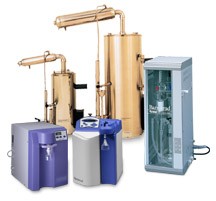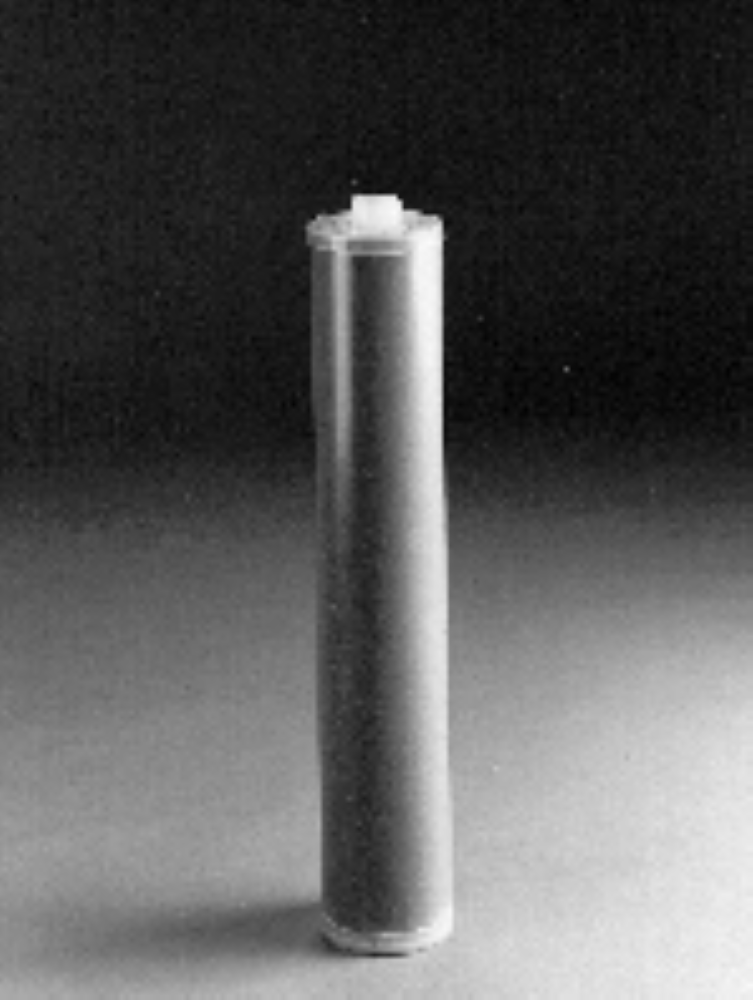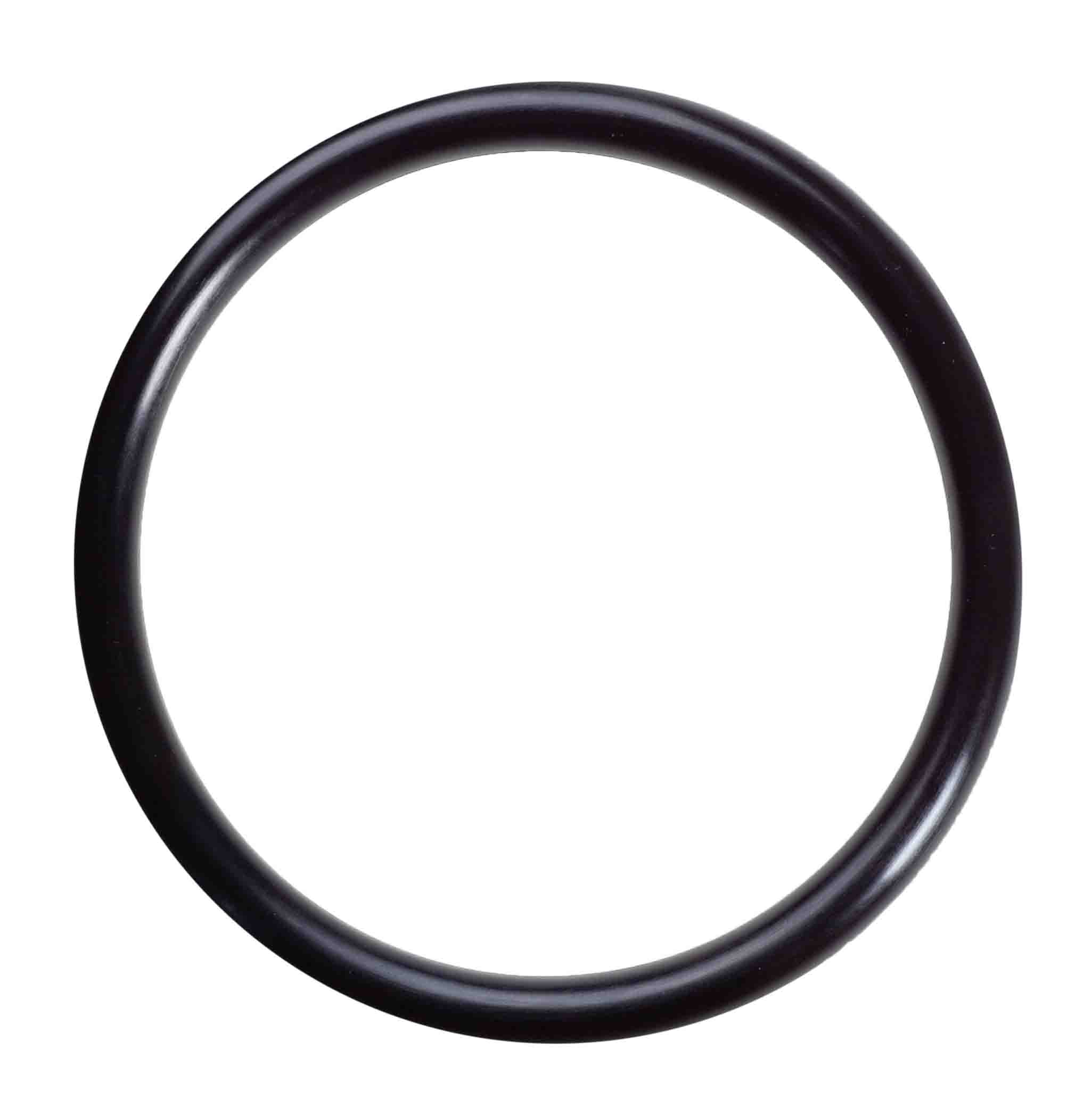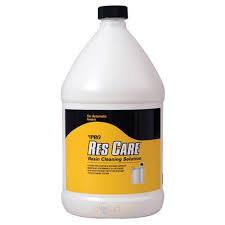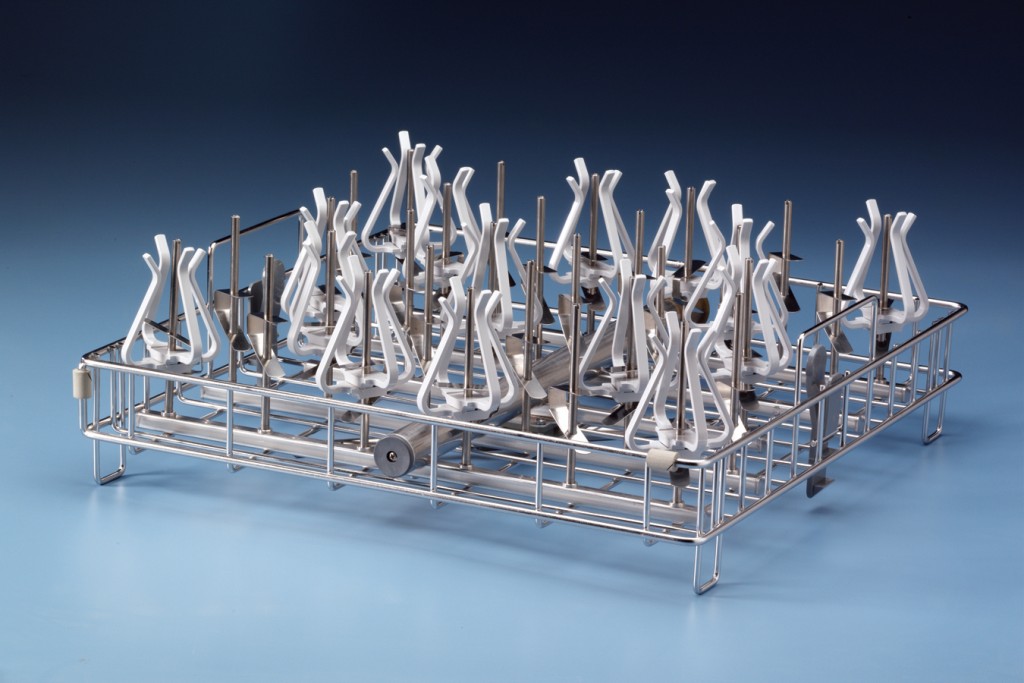Cryptosporidium and your water supply
What is Cryptosporidium (pronounced crip-toe-spor-ID-ee-um)? Cryptosporidium is a parasite that lives in the intestines of animals and people. It causes a disease called cryptosporidiosis (crip-toe-spor-id-ee-O-sis).
Many people use the shortened version of “crypto” when talking about Cryptosporidium.
Crypto, which cannot be seen without a very powerful microscope, is so small that over 10,000 of them would fit on the period at the end of this sentence. The eggs of this parasite are known as oocysts (O-o-sists).
How does it get into your water supply?
Oocysts are present in most surface bodies of water like lakes, rivers, streams or springs, that are often sources of supplies for public drinking water. Oocysts are more prevalent in surface water when heavy rains increase runoff of wild and domestic animal wastes from the land, or when sewage treatment plants are overloaded or break down. The number of oocysts detected in untreated water vary with location, sampling time and laboratory methods. Water treatment plants remove most, but not always all, oocysts from municipal drinking water. It is not known exactly how many oocysts are sufficient to cause cryptosporidiosis, but the low numbers of oocysts sometimes present in drinking water are not considered cause for alarm in the general public.
How can we protect our water supplies from Cryptosporidium?
Water treatment methods alone cannot solve the problem. However, watershed protection and optimizing water treatment practices are critical. Land use controls such as septic system regulations and best management practices to control runoff can help keep human and animal wastes out of the water. Sewage treatment plants must be properly operated and maintained. Trained and certified water system operators can improve crypto removal but cannot guarantee complete protection.
How can you tell if your tap water is safe to drink?
A properly designed, operated and maintained water treatment plant will improve removal of crypto.
Properly drilled and maintained wells that tap into groundwater are unlikely to contain crypto because of the natural filtration that takes place as water percolates down through the soil. However, contaminants may flow into groundwater aquifers that lie beneath coarse soils or fractured bedrock. Very shallow or poorly constructed wells and springs can be contaminated with surface water runoff that carries disease-causing microbes. It is important that the well be protected from surface contamination by an intact well casing, proper seals and a cap above ground. The risk of waterborne cryptosporidiosis from public drinking water varies depending on the quality of the source water and type of water treatment. When testing of public drinking water indicates potential danger, the Department of Environmental Protection (DEP) and/or the water supplier will issue a “boil water” advisory.
Is cryptosporidiosis a new disease?
Cryptosporidiosis has long been a veterinary problem, predominantly in young farm animals, such as calves. Cryptosporidium was first recognized as a cause of human disease in 1976, but was rarely reported in humans until 1982. The number of detected cases began to rise rapidly along with the development of methods to identify the parasite in stool samples. The earliest cases of human cryptosporidiosis were diagnosed in animal handlers. An outbreak at a day care center was first documented in 1983. In 1987, 13,000 people in Carrollton, Ga., became ill with cryptosporidiosis. This was the first known instance where it spread through a municipal water system that met all state and federal drinking water standards. In the spring of 1993, in Milwaukee, Wi., municipal drinking water, again within standards, was contaminated with Cryptosporidium. An estimated 400,000 people became ill and the disease contributed to the deaths of some AIDS patients. These outbreaks focused attention on the risk of waterborne cryptosporidiosis and the possible need for stricter drinking water standards.
How is cryptosporidiosis spread?
You can become infected by crypto by putting anything in your mouth that has touched the feces of a person or animal with crypto. You can also become infected by crypto by touching your mouth after touching the feces of infected persons or animals, or touching soil or objects contaminated with feces. Drinking contaminated water or eating contaminated food also can give you cryptosporidiosis. You cannot get crypto by touching the blood of an infected person or animal. Drinking untreated surface water from streams, rivers, lakes and springs also can cause the illness. The parasite may spread through uncooked foods, beverages or ice prepared with contaminated water. Unwashed fresh fruits or vegetables may carry oocysts if manure was used or animals grazed where the crop was grown. People who work with animals, especially young animals or animals with diarrhea, have a greater chance of exposure to the parasite. You may pick up oocysts while handling soil, or any object contaminated with even a small amount of feces. Frequent handwashing is the single most important thing people can do to avoid spreading crypto and other illnesses.
What are the symptoms of cryptosporidiosis?
The most common symptom is watery diarrhea. However, watery diarrhea is a symptom of many intestinal diseases caused by bacteria, viruses or parasites. Cryptosporidiosis cannot be diagnosed by symptoms alone. There may also be abdominal cramps, nausea, low-grade fever, dehydration and weight loss. Symptoms usually develop four to six days after infection, but may appear anytime from two to ten days after infection.
Who is at risk?
People most at risk include: child care workers; diaper-aged children who attend child care centers; persons exposed to human feces through sexual contact; and caregivers who might come in direct contact with feces while caring for a person infected with crypto at home or in a medical facility. The infection may continue and become life-threatening in persons with suppressed immune systems, such as cancer chemotherapy patients; AIDS patients; organ or bone marrow transplant patients; or others taking medications that suppress the immune system.
How do we treat our public water supply?
Oocysts are not killed by typical household disinfectants or bleach, but are killed at temperatures over 160 degrees Fahrenheit (hotter than most domestic hot tap water). Water should be brought to a rolling boil for at least one minute. Boiling water is one of the most effective ways of killing Cryptosporidium Boiled water should be stored in the refrigerator in a clean bottle or pitcher with a lid. To prevent recontamination, be careful not to touch the inside of the water bottle or lid. As always, be very careful when boiling water or handling boiled water to avoid scalding. As an alternative to boiled water, point-of-use filters may be used to treat water by attaching a unit to the faucet or by using tabletop pour-through containers that hold a small amount of water. NSF International, an independent non-profit testing agency, publishes lists of filters and treatment units certified for “cyst reduction.” Physical removal of particles, including oocysts, from water by filtration is an important step in the municipal water treatment process. Typically, water pumped from rivers or lakes into a treatment plant is mixed with coagulants that help settle out particles suspended in the water. Sand filtration removes more particles. Finally, the finished water is disinfected and piped to consumers. Under the Pennsylvania Filtration Rule of 1989, public water systems are required to filter surface water sources.
The U.S. Environmental Protection Agency (EPA) has recently set new standards for turbidity (cloudiness) and coliform bacteria (which indicate pathogens are probably present) in drinking water.
Frequent monitoring is required so officials will have an early warning of potential problems and can take steps to protect public health.
Unfortunately, there are no water quality indicators that can reliably predict the occurrence of cryptosporidiosis. Efforts are underway to answer questions about the occurrence, detection and treatment of Cryptosporidium in water so that EPA and states can set specific standards for this parasite in the future. The collaborative efforts of water utilities, government agencies, health care providers and individuals are needed to prevent outbreaks of cryptosporidiosis.
Isn’t all bottled water safe to drink?
Under current standards, bottled water is not necessarily any safer than tap water. Bottled water from deep wells (groundwater sources) has a very low likelihood of containing oocysts, but bottled water from a surface water source has the same risk of containing oocysts as tap water from that source unless it is treated before bottling. Read the label on bottled water for information about the water source and treatment. Water can be distilled or pasteurized to kill all pathogens before bottling. Procedures for using ozone to inactivate oocysts in bottled water have not yet been established. Oocysts can be removed by Reverse Osmosis or a filter with an absolute one micron rating. Other microfiltration, ion-exchange methods or treatment with chlorine, carbon dioxide or ultraviolet light cannot promise crypto-free water. The heat of pasteurization will kill all pathogens in dairy products. Bottled and canned bubbly drinks, such as sodas and beer, are usually heated and/or filtered enough to kill or remove Cryptosporidium. What is the role of DEP? DEP field staff regularly inspect public water systems to ensure that all operators have the knowledge and equipment to optimize the performance of their facilities and thereby protect the citizens of Pennsylvania. DEP conducts a special program to monitor and evaluate surface water filtration plants to ensure that oocysts are removed from the source water. When an increased health risk is identified, DEP directs the supplier to take immediate steps to protect consumers by either issuing a boil water advisory, or increasing the chlorine concentration in the water supply. These measures remain in effect until the source of the contamination is identified and treatment is improved.
What else will minimize risks?
Most healthy persons do not become ill with this disease. However, people who have a very low immunity to infection can contract a severe, and sometimes fatal, illness. Therefore, persons with conditions that impair immune system function may choose to follow these guidelines to reduce their risk of getting this disease:
• Wash hands after bathroom use and diaper changing;
• Wash hands before making and eating meals;
• Boil all drinking water vigorously for one minute;
• Boil all water used for washing fruits and vegetables;
• Boil all water used for brushing teeth; • Boil all water used for making fruit juices and ice cubes;
• Dry all dishes, silverware, pots and pans completely after washing;
• Avoid drinking beverages or fountain drinks made from tap water at public places;
• Do not swallow or drink water from lakes, pools or rivers; and
• Avoid oral-anal sex practice that causes mouth contact with feces.
Persons with questions about these guidelines may contact the Pennsylvania Department of Health at (717) 787-3350. DEP strongly encourages public water systems to convey to customers the fact that new information, such as new abilities to detect Cryptosporidium in some raw water sources and finished water, involves scientific uncertainty and may require new solutions. Systems should also inform customers of safe alternatives or additional treatment processes proposed to improve water quality and the associated costs. It is important to convey the fact that completely “sterile” water is an unrealistic expectation, and that public drinking water will present some risk, however small, to those with weakened immune systems. DEP Regional Offices of the Bureau of Water Standards and Facility Regulation are available to answer questions that you might have concerning the quality of your drinking water. A complete list of DEP offices and the counties they serve is provided on the next page. Other sources of information: 1. For more information on Cryptosporidium, contact your doctor or other healthcare provider. 2. The National Center for Disease Control and Prevention (CDC).
For a fact sheet:
www.cdc.gov/ncidod/publications/brochures/cryptos.htm. 3. The National Center for Disease Control and Prevention (CDC).
Guidance for persons with HIV/AIDS who are concerned about Cryptosporidiosis:
www.cdc.gov/hiv/pubs/brochure/oi_cryp.htm. 4. The U.S. Department of Agriculture, in conjunction with Cornell University, has prepared a general information document on Cryptosporidium: www.nalusda.gov/wqic/cornell.html. 5. NSF International, a non-profit agency: 1-800-NSF-8010, or their website at www.nsf.org. 6. Pennsylvania Department of Health: 717-787-3350, or their website at www.health.state.pa.us. For more information, visit DEP’s Web site at http://www.depweb.state.pa.us/, Keyword: “Drinking Water.”
|
|
Images are representative of the products. Images may or may not be of the actual product. If it is important e-mail us for an actual image if available.
* Flat Rate UPS shipping when able to ship via UPS and is in the USA excluding Hawaii and Alaska.
Larger Items may not be able to ship via UPS, in that case freight charges will be quoted seperately.
International shipping will be quoted after the order is placed. You will have the opportunity to cancel before we finalize your order.
Terms and conditions
Credit Application
Privacy
Policy
List All Products
|
